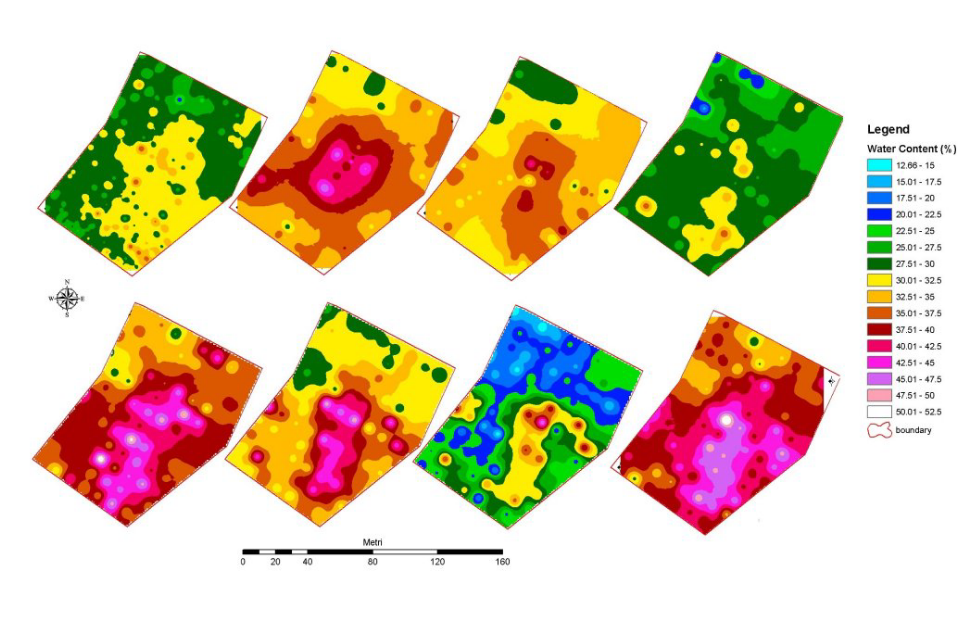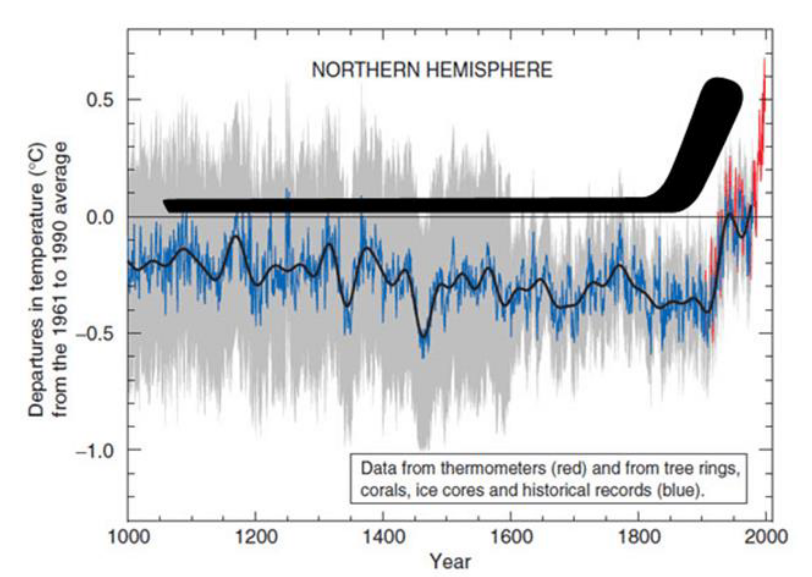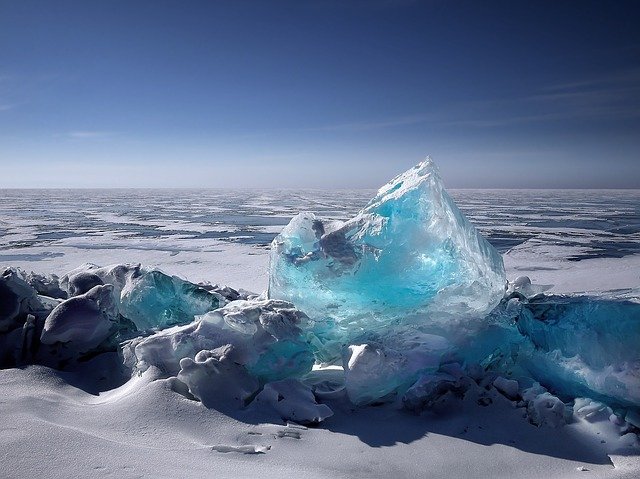Climate
Jean-Christophe Calvet presents a neural network that has been trained using the modelled surface soil moisture (SSM), soil temperature, rainwater interception by leaves, and satellite-derived LAI observations from Copernicus.
In the context of climate warming, the frequency and the intensity of extreme events such as droughts is increasing, and better modelling the response of vegetation to climate is needed. Monitoring the impact of extreme events on terrestrial surfaces involves a number of variables of the soil-plant system such as surface albedo, the soil water content and the vegetation leaf area index (LAI). These variables can be monitored by either using the unprecedented amount of data from the Earth observation satellite fleet, or using land surface models. Another solution consists in combining all available sources of information by assimilating satellite observations into models. In this work, level 1 ASCAT backscatter values (sigma0) are assimilated in the ISBA land surface model of Meteo-France using the LDAS-Monde tool. First, an observation operator is built using machine learning. A neural network (NN) is trained using the modelled surface soil moisture (SSM), soil temperature, rainwater interception by leaves, and satellite-derived LAI observations from Copernicus. The NN is then used for simulating sigma0, making LDAS-Monde capable of assimilating ASCAT sigma0 observations. It is shown that the assimilation of sigma0 alone is able to markedly improve the simulated LAI and soil moisture.
Presentation on OSI SAF radiative fluxes Products and Services.
This short presentation on OSI SAF radiative fluxes Products and Services is given by Pierre Le Borgne from Meteo-France. Two main products that are described here are Surface Solar Irradiance (SSI) product and Downward Longwave Irradiance (DLI) product. For SSI product, physical parametrization is applied and for DLI product bulk parametrization. What is derived from satellite is the visible channel for SSI and cloud precipitation DLI. Hourly SSI and DLI products and the flux validation results are also shown in this lecture.
Presentation during the event week on Snow in January 2010.
Jouni Pulliainen from FMI will present research results and snow products for climate research purposes.
Another speaker from FMI, Panu Lahtinen, will give a short overview of the four snow products being developed in the Eumetsat Satellite application facility on water management and hydrology (H-SAF). The ongoing developments on these products are discussed, and the future goals are shown. Also, some validation results will be shown.
Humberto Barbosa focusses in his weather briefing on climate variability and teleconnection processes. He explains how weather anomalies like El Nino affect distant regions.
Length: 55 min
Author: Humberto Barbosa
Humberto A. Barbosa received his BS in Meteorology at the University Federal of Campina Grande (1995), and his MS in Remote Sensing from the Brazilian Institute for Spatial Research (INPE) – São José dos Campos (1998) and his PhD in Soil, Water and Environmental Sciences from the University of Arizona – Tucson (2004). Currently, he is an adjunct professor III of the Federal University of Alagoas. He has experience in the area of Geosciences, with emphasis in Climatology, concentrating mainly on the following subjects: interactions atmosphere-biosphere, satellite- and ground-based remote sensing of agricultural and environmental areas for extraction of soil and vegetation biophysical parameters and remote sensing techniques.
Christoph Gatzen gives an overview of cold-season derechos that occurred across Central Europe between 1997 and 2014.
Length: 30 min
Author: Christoph Gatzen (MeteoGroup)
The presentation gives an overview of cold-season derechos that occurred across Central Europe between 1997 and 2014. The environmental conditions leading to persistent, intense thunderstorms and associated long-track high wind events are analyzed using reanalysis data and proximity soundings. A focus is the development of deep moist convection in initially stable air masses due to synoptic-scale processes.
Tomas Pucik presents a study of the environments of non-severe and severe thunderstorms in Central Europe.
Length: 30 min
Author: Tomaš Pučik (ESSL)
The environments of non-severe and severe thunderstorms in Central Europe were studied using 16421 proximity soundings acquired in the period from December 2007 to December 2013. In this presentation, we will concentrate on different sounding-derived parameters and how their values change with the increasing severity of thunderstorm-related hazards (large hail, severe wind gusts, tornadoes, excessive precipitation). For example, we show that probability of these hazards as a function of CAPE and 0-6 km bulk shear is different for each hazard. We also present implications for forecasters, such as that area of parameter space with the highest probability of particular hazard may not collocate with the area where it is most frequent.
In this module you will learn how snow cover and snow water equivalent are determined by satellite instruments and how this data can be applied for regional climate studies.
Snow cover is an important climate variable on both local and global scales. It affects the planetary radiation budget through high albedo values. It influences the hydrological cycle globally and locally, and for many locations it is an important source of water. In this module you will learn how snow cover and snow water equivalent are determined by satellite instruments and how this data can be applied for regional climate studies.
Simone Gabellani and Fabio Delogu describe how soil moisture estimated trough satellite can be compared and validated with other sources of information.
Length: 38+39 minutes.
Soil Moisture is a crucial variable in hydrological applications. It can be measured and estimates in different way and along different spatial and temporal scale. The presentation describes how soil moisture estimated trough satellite can be compared and validated with other sources of information; theoretical basis and practical example will be showed.
Lauryna Sidlauskaite talks about the challenges of winter road weather forecasts in view of climate change.
Length: 39 minutes.
Climate change is almost literally the "hot" topic of today. Scientists agree that cars with combustion engines are one of the main sources of greenhouse gasses, however, with such vastly growing world economy, transportation of goods and people is essential. Thus, certain measures must be and are being made to reduce their negative effect on climate.
Humanity has reached a point in time, when even if greenhouse gas emissions could be reduced to pre-industrial times it will not stop the human-induced climate change and the effects of it will be felt for decades or even centuries to come. Therefore, we’re compelled to know and understand what to expect from road weather, especially in winter seasons.
In this session, the problem of lack of specific climate forecasts for winter road weather will be discussed and future climate projections for road weather patterns will be presented with Lithuania as an example. The study in question involved regular climate forecasts for 21st century for several RCPs, downscaling of data to fit Lithuania and formation several statistical indices, that better describe road weather for road maintenance workers and road users. Using the indices allows a better understanding on what’s to come and how climate change will impact road weather in the 21st century.
Presentation 3 the Environment Event Week 2016
Length: 30 min
Author: Tommi Bergman (FMI)
The aerosols have recently been incorporated into increasing number of global climate models. Aerosol models in global climate models are validated using variety of ground-based observations and satellite retrievals. Both data have their own advantages and disadvantages. For example, in-situ observations of particle size and composition give exact information on the aerosol distribution for small regions on the ground while satellite retrievals give a broader view on the global distribution of aerosols. In both cases the rather coarse spatial and temporal resolution of the global models increase the difficulty of using these data for their validation. I will demonstrate the limitations of the satellite retrievals and in-situ observations when comparing with models and demonstrate how, for example, collocation of the data can help to improve the match between models and observations.
Yulia Mishenina presents the results of studies of the characteristics of snow cover for the territories of Western and Eastern Siberia.
The report presents the results of studies of the characteristics of snow cover for the territories of Western and Eastern Siberia. The research period is from 1976 to 2020.
The report describes the duration of persistent snow cover, the time intervals between the first snowfall and stable snow cover and between the destruction and disappearance, a number of characteristics of the snow cover: duration of occurrence, thickness and water content.
Sven Kotlarski summarizes current research on the fate of surface snow cover and its implications for climate.
The presence of snow cover on the land surface is closely linked to the prevailing climate. Moreover, by modulating surface energy fluxes snow cover is interactively linked to the atmosphere and constitutes an important component of global and regional climate systems. Available observations show a retreat of snow cover on hemispheric scales as a response to global warming, and climate projections consistently indicate a further decrease. Focusing on Europe and especially on the European Alps, this contribution summarizes current research on the fate of surface snow cover and its implications.












